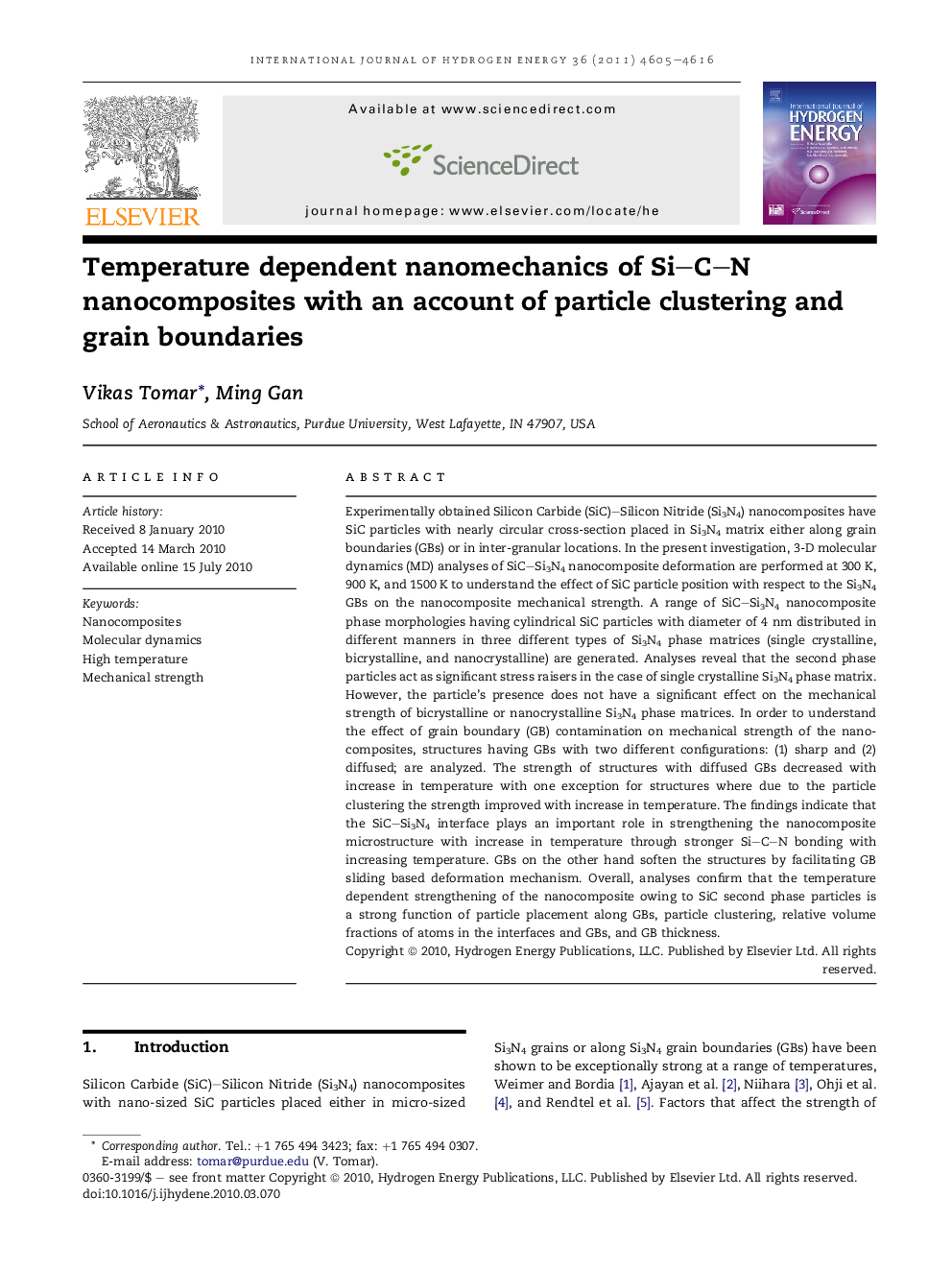| کد مقاله | کد نشریه | سال انتشار | مقاله انگلیسی | نسخه تمام متن |
|---|---|---|---|---|
| 1276254 | 1497586 | 2011 | 12 صفحه PDF | دانلود رایگان |

Experimentally obtained Silicon Carbide (SiC)–Silicon Nitride (Si3N4) nanocomposites have SiC particles with nearly circular cross-section placed in Si3N4 matrix either along grain boundaries (GBs) or in inter-granular locations. In the present investigation, 3-D molecular dynamics (MD) analyses of SiC–Si3N4 nanocomposite deformation are performed at 300 K, 900 K, and 1500 K to understand the effect of SiC particle position with respect to the Si3N4 GBs on the nanocomposite mechanical strength. A range of SiC–Si3N4 nanocomposite phase morphologies having cylindrical SiC particles with diameter of 4 nm distributed in different manners in three different types of Si3N4 phase matrices (single crystalline, bicrystalline, and nanocrystalline) are generated. Analyses reveal that the second phase particles act as significant stress raisers in the case of single crystalline Si3N4 phase matrix. However, the particle’s presence does not have a significant effect on the mechanical strength of bicrystalline or nanocrystalline Si3N4 phase matrices. In order to understand the effect of grain boundary (GB) contamination on mechanical strength of the nanocomposites, structures having GBs with two different configurations: (1) sharp and (2) diffused; are analyzed. The strength of structures with diffused GBs decreased with increase in temperature with one exception for structures where due to the particle clustering the strength improved with increase in temperature. The findings indicate that the SiC–Si3N4 interface plays an important role in strengthening the nanocomposite microstructure with increase in temperature through stronger Si–C–N bonding with increasing temperature. GBs on the other hand soften the structures by facilitating GB sliding based deformation mechanism. Overall, analyses confirm that the temperature dependent strengthening of the nanocomposite owing to SiC second phase particles is a strong function of particle placement along GBs, particle clustering, relative volume fractions of atoms in the interfaces and GBs, and GB thickness.
Journal: International Journal of Hydrogen Energy - Volume 36, Issue 7, April 2011, Pages 4605–4616